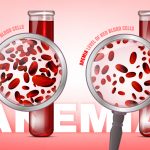Overview
Differences
Symptoms
Treatment
Double depression
Takeaway
Dysthymia and depression can both result in feelings of deep sadness and hopelessness. However, these two conditions vary in the severity and consistency of their symptoms.
While some people may use the terms above, the medical classifications for dysthymia and depression are persistent depressive disorder (PDD) and major depressive disorder (MDD), respectively.
Understanding these differences can be an important first step toward getting the right treatment.
Read on to learn more about how the conditions differ in their symptoms, how medical professionals can diagnose them, and what treatment options are available to you.
What are dysthymia (PDD) and depression (MDD)?
Both conditions are relatively common. According to estimates, over 7 percentTrusted Source of all adults in the United States will have experienced a major depressive episode in the last year, while around 2.5 percentTrusted Source will experience PDD at least once in their lifetime.
Dysthymia (PDD)
PDD is a chronic form of depression that’s less severe than MDD but lasts for years. It can significantly affect your:
relationships
family life
social life
physical health
daily activities
Depression (MDD)
MDD is a common medical illness that negatively affects the way you think, feel, and act.
This may lead to emotional and physical problems that can interfere with your ability to function at home and work.
Finding help
If you or someone you know is considering suicide or self-harm, please seek help. The following services can provide confidential assistance, information, and support:
Call the National Suicide Prevention Lifeline 24 hours a day at 800-273-8255.
Text “HOME” to the Crisis Text line at 741741.
Call 911 or your local emergency number if you feel it’s an emergency.
Not in the U.S.? Find a helpline in your country with Befrienders Worldwide.
If you or someone you know is facing mental or substance use disorders, call SAMHSA’s National Helpline at 800-662-4357.
Differences between dysthymia (PDD) and depression (MDD)
Medical professionals typically use PDD to describe a person who experiences clinically significant depression over a long period.
As a result, the most significant difference between the two conditions is how long a person may experience symptoms.
For a diagnosis of MDD, symptoms must last at least 2 weeksTrusted Source, and for a diagnosis of PDD, symptoms must have been present for at least 2 yearsTrusted Source.
The two conditions also differ in terms of recurrence and severity.
While people with PDD will typically experience depression for longer than someone with clinical depression, their symptoms may not be severeTrusted Source enough for an MDD diagnosis. However, people with PDD can still experience major depressive episodes.
Between these episodes, people with PDD will return to feelings of general, less severe depression.
In contrast, people who exclusively have MDD may return to a regular mood baseline between major episodes. During this time, they may not experience any symptoms of depression at all.
Continue Reading: https://www.healthline.com/health/dysthymia-vs-depression






